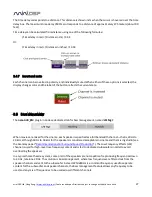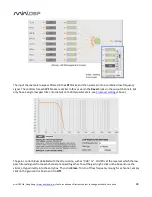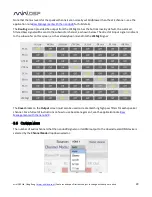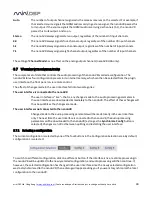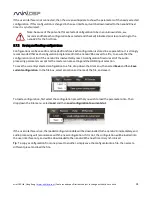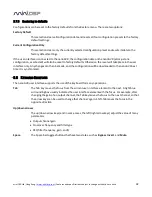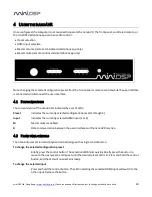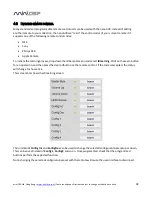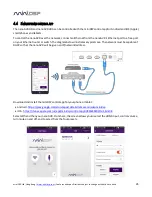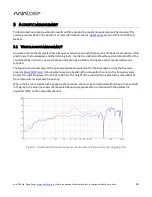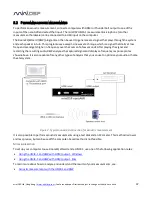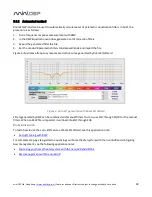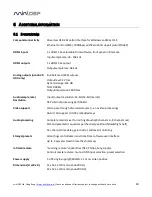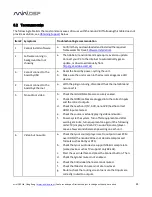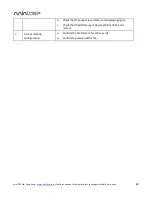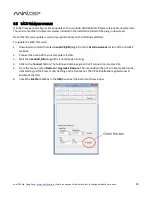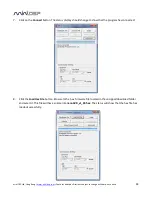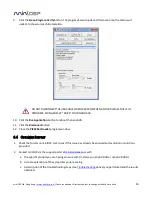
mi niDSP Ltd, Hong Kong /
/ Features and speci fi cations subject to change wi thout pri or noti ce
41
6.2
T
ROUBLESHOOTING
The following table lists the most common causes of issues with the nanoAVR. If following this table does not
provide a solution, see
below.
Item# Symptoms
Troubleshooting recommendation
1
Cannot install software
a.
Confirm that you downloaded and installed the required
frameworks first (see
2
Software running in
background but not
showing
a.
The Adobe Air environment may require a version update.
Connect your PC to the Internet to automatically get an
update, or download manually from
.
3
Cannot connect to the
board by USB
a.
Reset the board by power-cycling the unit.
b.
Make sure the unit is seen in the device manager as a HID
device.
4
Cannot connect to the
board by Ethernet
a.
With the plugin running, disconnect the Ethernet cable and
reconnect it.
5
No audio or video
b.
Check that all HDMI cables are securely seated.
c.
Check that HDMI cables are plugged into the correct inputs
and the correct outputs.
d.
Check that each unit (TV, AVR, nanoAVR) has the correct
HDMI input selected.
e.
Check the source is actually playing video and audio.
f.
Power-cycle the system. Turn off all equipment and after
waiting a minute, turn equipment on again in the following
order: TV/display, AVR or AVP, nanoAVR, source/player.
Leave a few seconds between powering on each unit.
6
Video but no audio
a.
Check that your source/player is set to output Linear PCM
over HDMI (the nanoAVR does not decode compressed
formats such as Dolby or DTS).
b.
Check that your audio device supports 96 kHz sample rate
(some devices such as TVs support only 48 kHz).
c.
Start the user interface and press the Connect button. Then:
d.
Check that global mute is not enabled.
e.
Check that individual channels are not muted.
f.
Check that Master Volume is not at a low level.
g.
Double-check the routing screen to ensure that inputs are
correctly routed to outputs.

